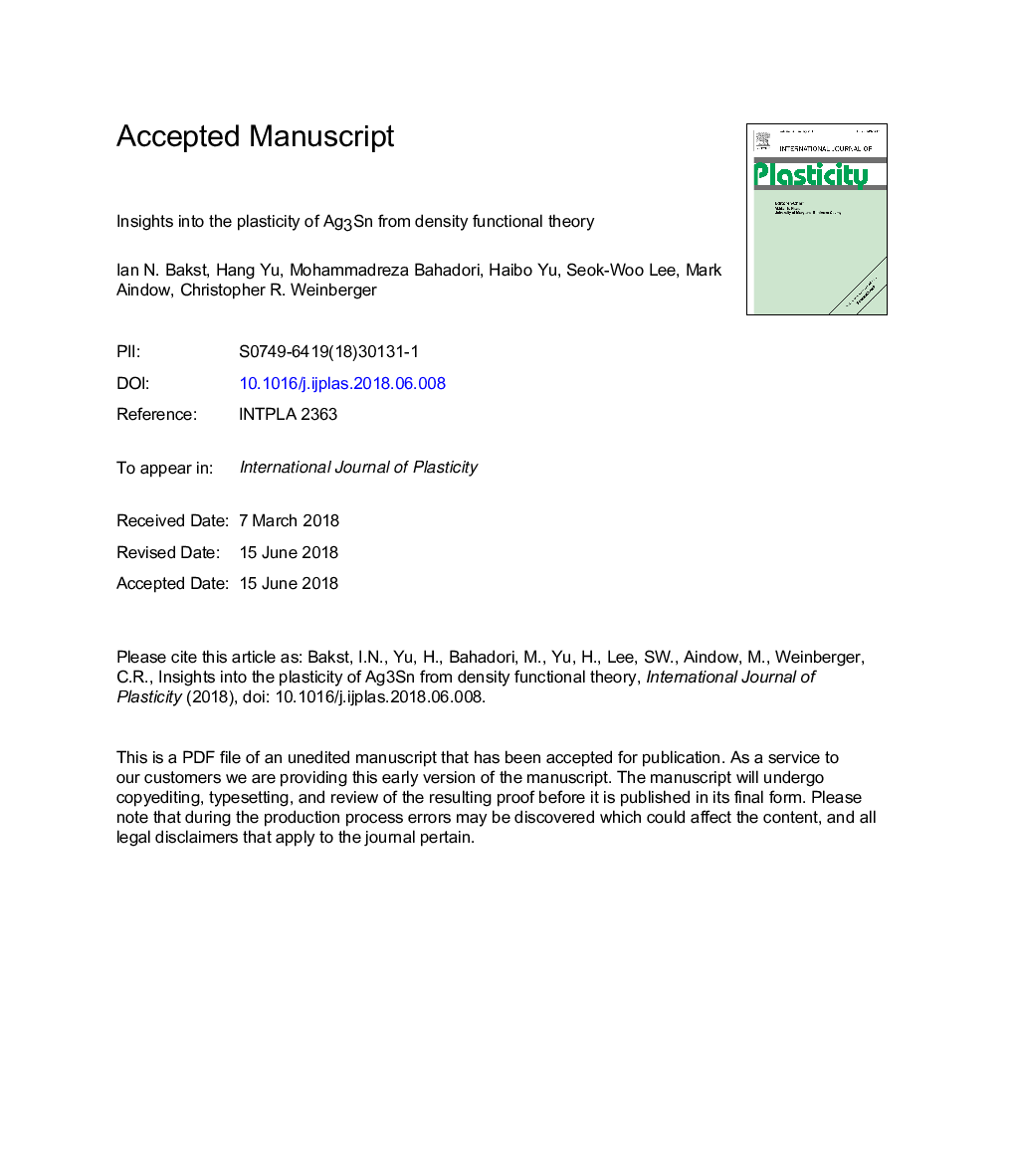| Article ID | Journal | Published Year | Pages | File Type |
|---|---|---|---|---|
| 10152395 | International Journal of Plasticity | 2018 | 31 Pages |
Abstract
The intermetallic Ag3Sn is a strengthening phase in both silver amalgams as well as Sn-Ag lead-free solders, but is also a relatively ductile compound. Experimental reports have suggested that the compound can both readily slip via dislocations as well as deform via twinning. To better understand the deformation mechanisms in Ag3Sn, we investigate the energetics of slip via generalized stacking fault (GSF) curves as well as the structure and energetics of the twins using both density functional theory and analytical modeling. Our results suggest that [100](001) slip, which is equivalent to ãaãhcp slip on a prism plane in the hcp structure, is favorable due to a very low antiphase boundary energy. Slip on the (010) plane, which is equivalent to the basal plane in hcp metals, can occur in either the [100] or [001] directions via the formation of four superpartials. Our results further suggest that slip in the ã102ã direction could occur easily on either the {201} or {211} planes with the former being more likely since it is similar to prism planes in the hcp crystal. The overall values of the GSF curves are quite low, similar to high stacking fault energy metals, resulting in a rather ductile intermetallic. Simulations of the twins in Ag3Sn demonstrate that they are structurally similar to twins in hcp metals with similar energy magnitudes. However, the experimentally observed activation of the {011} and {211} is likely a result of the small shear required to form the twins, and the suppression of other twin types is a likely a result of chemical ordering. Finally, our results point out that twinning is likely a necessary deformation mode to account for a general state of plastic deformation.
Keywords
Related Topics
Physical Sciences and Engineering
Engineering
Mechanical Engineering
Authors
Ian N. Bakst, Hang Yu, Mohammadreza Bahadori, Haibo Yu, Seok-Woo Lee, Mark Aindow, Christopher R. Weinberger,
